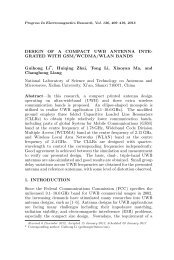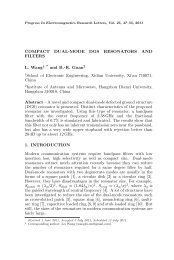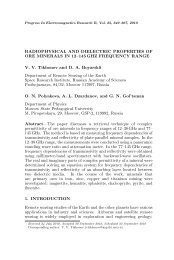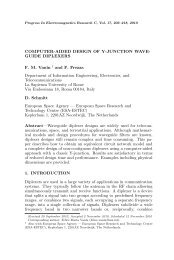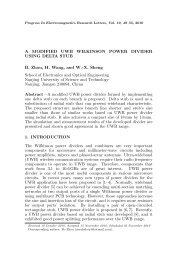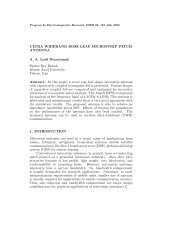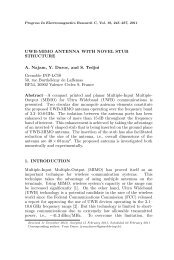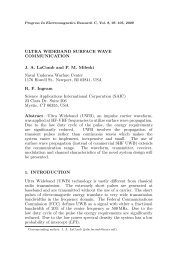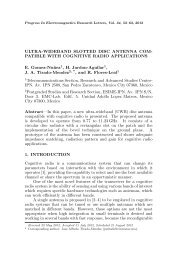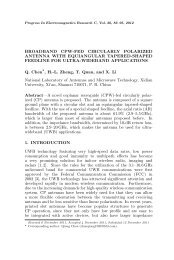CPW-FED SLEEVE MONOPOLE ANTENNA WITH - PIER
CPW-FED SLEEVE MONOPOLE ANTENNA WITH - PIER
CPW-FED SLEEVE MONOPOLE ANTENNA WITH - PIER
You also want an ePaper? Increase the reach of your titles
YUMPU automatically turns print PDFs into web optimized ePapers that Google loves.
26 Liu et al.<br />
mode (#2) directions are shown as the arrow. Similarly, Fig. 4(b)<br />
shows the complementary SIR radiators are excited with I-shaped<br />
concentrating current distributions at the 770 MHz resonances while<br />
only one maximum located at the center of left SIR arm and two<br />
maximum split to both side of right SIR arm. And the first mode<br />
(#1) and the second mode (#2) directions are shown as the arrow.<br />
Obviously, the necessary two orthogonal modes in the antenna can be<br />
presented. This is confirmed from obtaining the CP characteristics of<br />
the proposed antenna.<br />
Since the two quasi-degenerate orthogonal modes of unequal<br />
amplitude and phase difference are excited, the purity of circular<br />
polarization will be relatively less. Thus, the circular polarization,<br />
related to direction, the variations of the observed angle are<br />
investigated and presented in Figs. 5(a) and (b). The minimum AR<br />
Figure 3. S11 spectrums of the<br />
proposed antenna.<br />
(a) (b)<br />
Figure 4. Simulated current<br />
distributions (a) 510 MHz<br />
(b) 770 MHz.<br />
(a) (b)<br />
Figure 5. Axial ratio spectrum. (a) 510 MHz. (b) 770 MHz.





